11 essential product metrics for measuring product-led growth

.png)

.png)
Editor's note: This article has been adapted from an original piece on the Product-Led Growth Collective.
Successful product-led companies are defined by alignment across cross-functional teams. One of the most tangible ways that companies can create alignment is by settling on the right set of product metrics.
Metrics provide a common language and reporting system that cross-functional teams can rally around, ultimately helping all departments navigate toward the same goal. In other words, the right product-led growth metrics don’t just help you measure success—they help you create it.
Below, we’ll take a look at some of the most important SaaS metrics for measuring and monitoring product-led growth.
First things first—to better understand how different areas of your company can leverage the product metrics listed below (and why folks across your business should even care in the first place), it’s useful to think of how each measurement fits into a wider framework. As it so happens, we've developed just the thing...

The Product-Led Growth Flywheel is a framework for growing your business by investing in a product-led user experience. The goal is to focus company-level and team-level strategy on optimizing the user experience, moving users from one stage to the next. As more users become advocates, they drive more acquisition, and growth increases exponentially.
We firmly believe that embracing the principles behind the flywheel is critical to fully realizing the potential of product-led growth (PLG).
Want to learn more? Check out the interactive Product-Led Growth Flywheel here.
We’ve put together a list of the product metrics we believe you should have on your radar as a product-led growth pro. The most important thing to remember as you read through the different product-led growth metrics below is that none of them should be siloed. These are all numbers teams should report on since these metrics are affected by multiple departments within a company. Now, let's get to it.

Time to value (TTV) is the amount of time it takes new users to realize your product’s value. Your goal should be to reduce time to value as much as possible—the sooner users reach their first aha moment or activation event, the better.
To do this, focus on optimizing your user onboarding experience around the key actions within your product that correlate to activation, like inviting colleagues to your platform, importing customer data, or integrating with other tools in their tech stack.
If you need help defining the key actions that lead users to activation, our aha moment guide has the answers you need.
TTV can also be defined as the time it takes a user to move from the activation to adoption phase in the Product-Led Growth Flywheel framework.
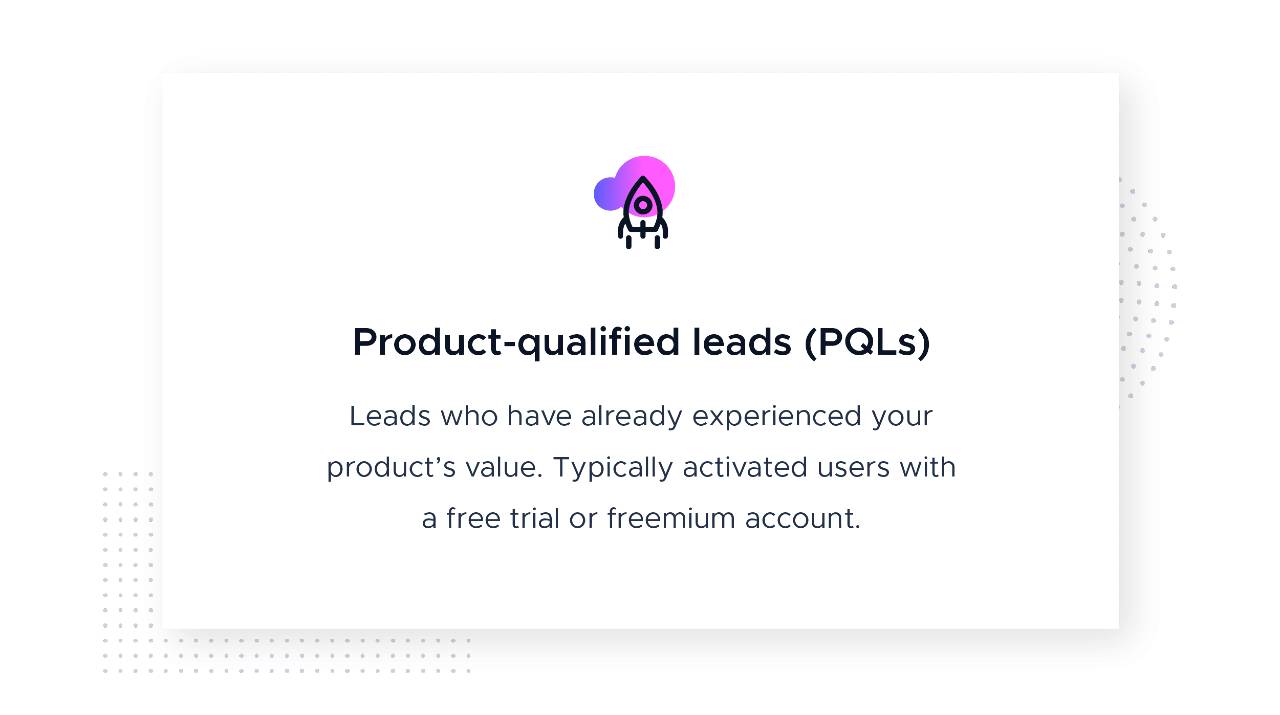
Product-qualified leads (PQLs) are typically activated users. These are users who have completed a key action within your product, had their aha moment, and experienced your product’s value for themselves.
To define what a product-qualified lead looks like for your product, you’ll need to identify your product’s activation event and the actions that users take within your product that indicate they are ready to move on to the next stage in their journey. You can do this through a combination of user interviews, session recordings, and A/B tests to identify the user behaviors that correlate with conversion and retention.
In the Product-Led Growth Flywheel framework, time to value is associated with the activation stage of the user journey.
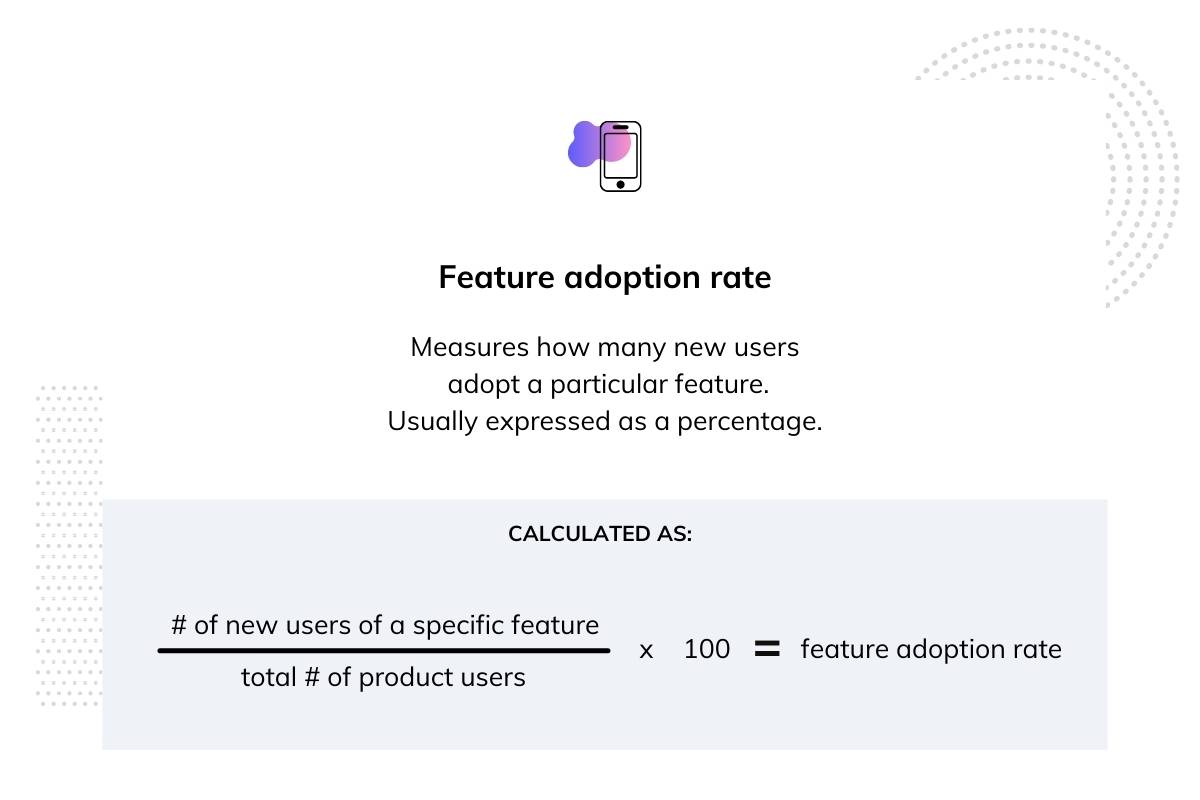
Product management teams typically have the product adoption rate high on their list of KPIs to track when launching a new product. But you’re missing a major piece of the PLG puzzle if you fail to add the feature adoption rate to that list as well.
Both rates are key metrics that indicate how well your product is received by your target users. The product adoption rate tells you the percentage of active users, while the feature adoption rate (which is also measured as a percentage) clues you into why people continue to engage with your product. You may find that the adoption rate of a new feature is what’s driving your overall product adoption rate to climb.
Getting insight into which features users find the most value in will inform your product positioning and any other product decisions you make.
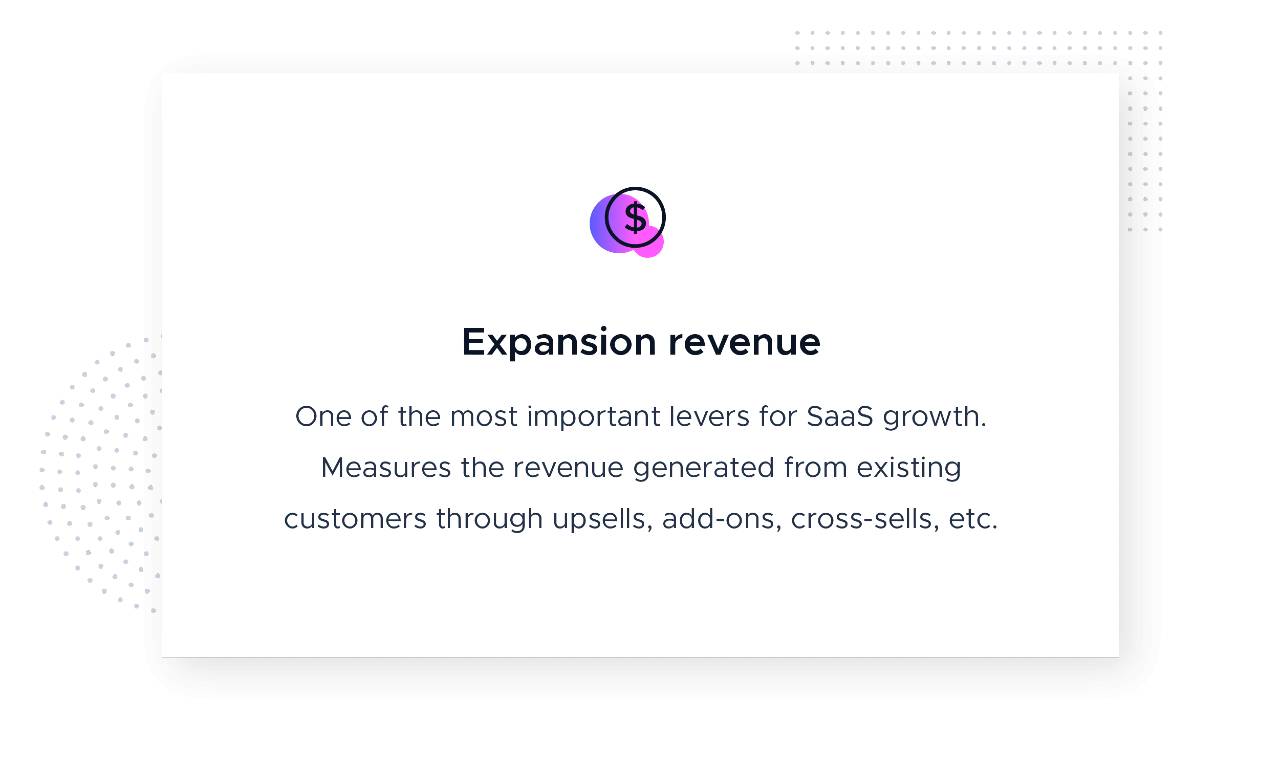
It’s a lot easier to get more money from happy, paying customers than it is to acquire new ones. It’s more cost-effective, too—it’s roughly 2X cheaper to upsell to an existing customer than to acquire a new one, and over 3X cheaper to generate expansion revenue than the customer acquisition cost (CAC) of a new customer.
That’s why expansion revenue is easily one of the most important levers for sustainable SaaS growth. Also called expansion monthly recurring revenue (MRR), this metric measures the revenue generated from existing customers through upsells, add-ons, and cross-sells. For a healthy SaaS business, ProfitWell recommends that at least 30% of your revenue should be expansion revenue.
In the Product-Led Growth Flywheel framework, expansion revenue is associated with the expansion stage of the user journey—when your regular users are looking for new ways to use your product.

The average revenue per user (ARPU) is the amount of money, on average, that you can expect to make from an individual user. ARPU is a good, high-level indicator of business health and is often used by analysts to compare SaaS companies.
ARPU is a straightforward metric, calculated as total MRR divided by total number of users.
Using the different sections of the Product-Led Growth Flywheel, you can segment your user groups and find out the ARPU for each group. It might seem obvious that the evaluator group has a lower ARPU than your beginners. But you may be surprised to learn that the ARPU for your regulars is higher than your champions. Or maybe the ARPU of your beginners is higher than you originally predicted. The Flywheel is a great way to unlock user engagement insights like ARPU.

Customer lifetime value (CLV or LTV) predicts the amount of revenue your business will receive from a single customer over the lifetime of their account. Lifetime value is used to identify valuable customer segments—all of which are defined in the Product-Led Growth Flywheel—and gain a more thorough understanding of reasonable acquisition and retention costs.
There are many ways to calculate CLV, both historically and predictively. However you do the math, customer lifetime value is one of the most important SaaS metrics you can measure. It allows you to not only understand how much a customer is worth to you right now, but also to predict how valuable they will be to your business over time.
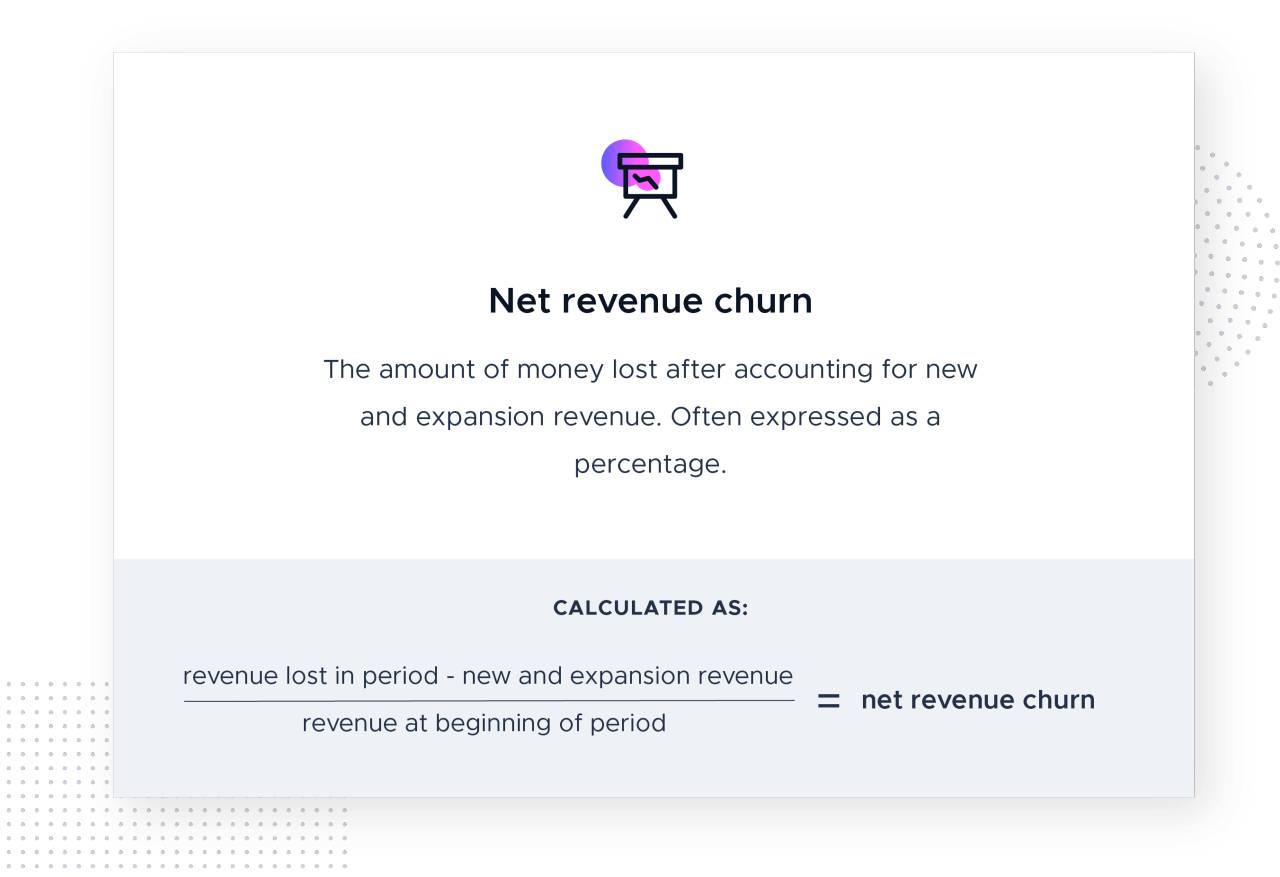
Some people are going to leave your product, plain and simple. Unfortunately, you’re almost always going to have to report some churn. When you do, net churn is a more useful metric for SaaS business than gross churn rate, because it gives you a more holistic picture of your company’s health.
Generally speaking, revenue churn is a more useful metric for SaaS growth than customer churn. Because, let’s be real; even though it sucks to lose your favorite customer, losing your most profitable customer hurts even more.
That’s why, if you only report one churn number, it should be net revenue churn—the amount of money lost after accounting for new, expansion, or reactivated revenue.
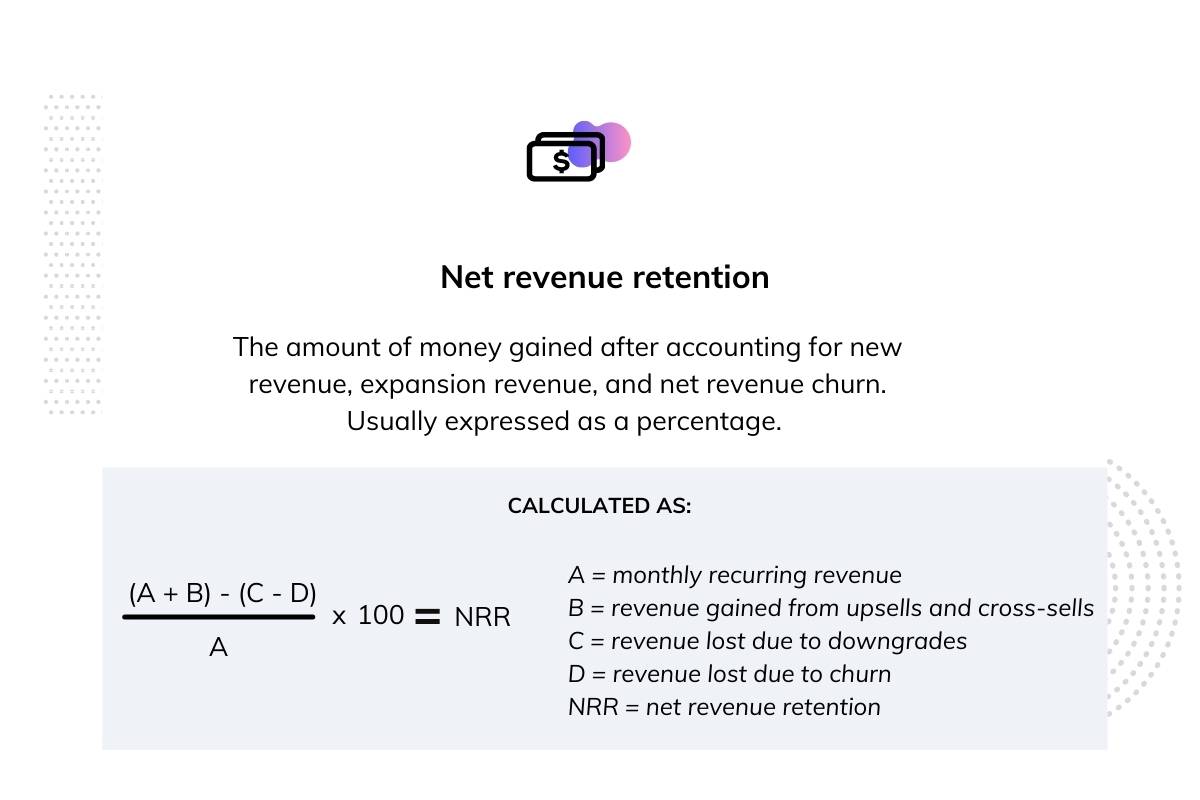
You may already keep track of your overall retention rate, but it’s important to also consider the number of customers you’ve retained and how much each of them is spending. After all, not every customer uses your product in the same way. Some retained customers may have upgraded and adopted new paid features or services. Other existing customers may have downgraded their plans or reverted to the free version of your app (if you have a SaaS product that’s on a freemium pricing structure).
Similar to net revenue churn, your net revenue retention rate tells you how much revenue you’ve generated after taking into account your expansion revenue as well as your churn rate.
Churn and retention are concerns at every stage of the user journey, as visualized in the Product-Led Growth Flywheel, but are especially relevant for regular users who have adopted your product but have yet to adore it. Knowing how much revenue you’re generating from retained customers shows you how effective your upsell and cross-sells marketing efforts are, and can uncover any weaknesses in your product that cause users to downgrade their subscriptions.

For your product to drive your company’s growth, you need to ensure your users are satisfied with your product. You might not be able to assign a numerical value to a person’s overall happiness, but when it comes to gauging how much your average customer likes your product, there’s a metric for that—CSAT.
Measuring customer satisfaction (CSAT) requires hearing directly from your users, so the feedback is especially valuable during product development. Build analytical feedback into your product with an in-app survey, so users can submit their opinions of your product as they engage with it.
Conducting live user interviews is also valuable for in-depth feedback. Keep in mind though, calculating your CSAT only requires users to rate their experience with your product on a short scale, usually between one and five, where 1 equals extremely dissatisfied and 5 equals extremely satisfied.
Like all other product metrics, your CSAT score will vary over time. The longer someone uses a product, the more time they have to either find more value in it or discover its challenges, so be sure to measure CSAT regularly. Present in-app user surveys at regular intervals (once a month is a good frequency) to stay on top of which direction customer satisfaction is trending. Whether your CSAT score increases or drops, remember to collect more in-depth customer feedback to supplement and enrich the data you have. It’s good to know how satisfied customers are with your product, but it’s more important to know why they feel that way.
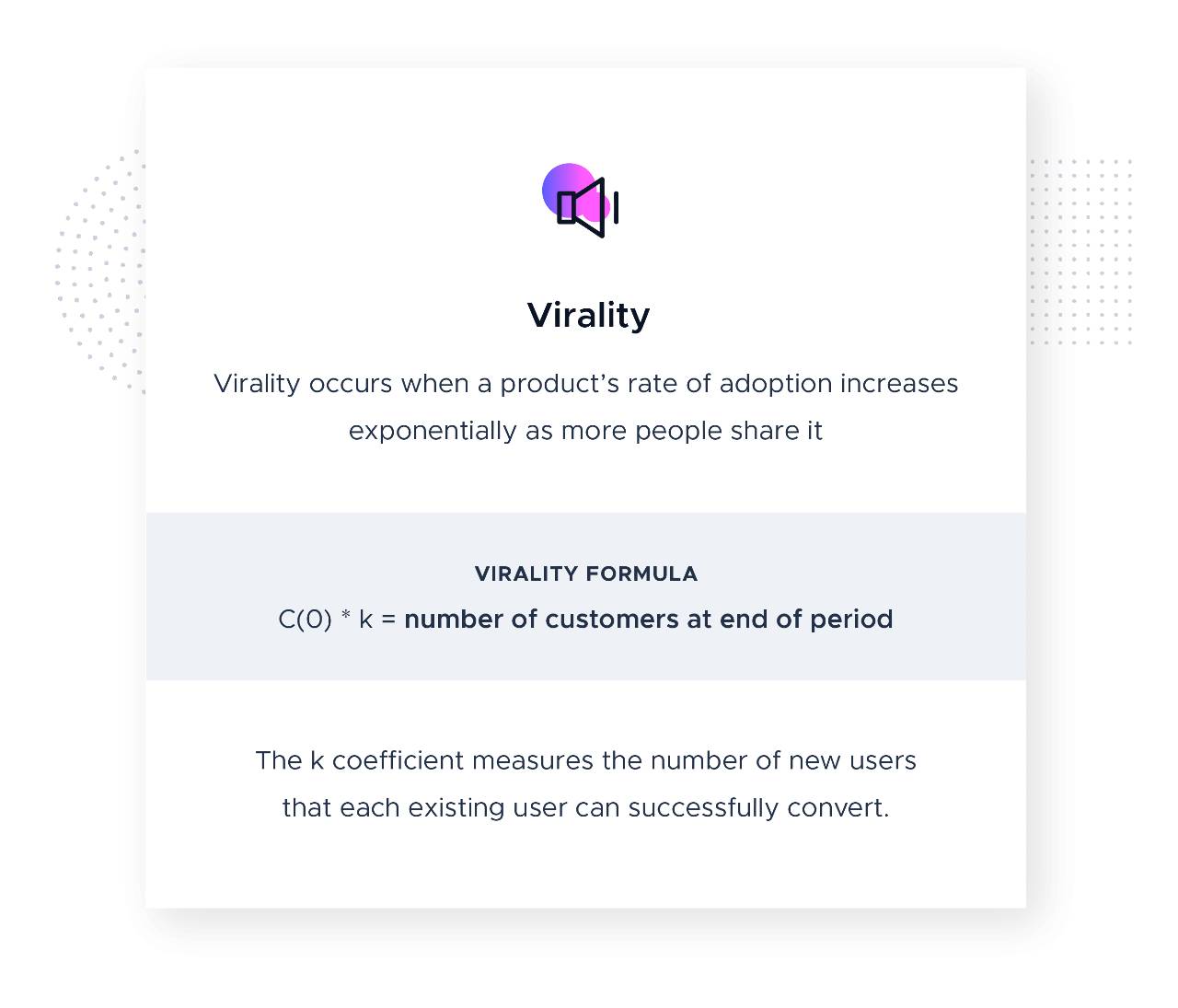
The terms virality and network effects are sometimes used interchangeably but are, in fact, very different (although they often occur hand in hand). We’ll discuss network effects in the next section, but let’s first bring attention to how virality helps you better understand the user experience.
Product virality occurs when a product’s rate of adoption increases exponentially with each additional user. For viral growth to happen, users must be able to promote your product by using it. If you notice that your virality is increasing, it’s a good indicator that your existing users are satisfied with your product and are likely championing your product within their networks.
Take Zoom, for example. By sending a Zoom video conference link to attendees who don’t already use the tool, existing users promote the product in the context of its use.
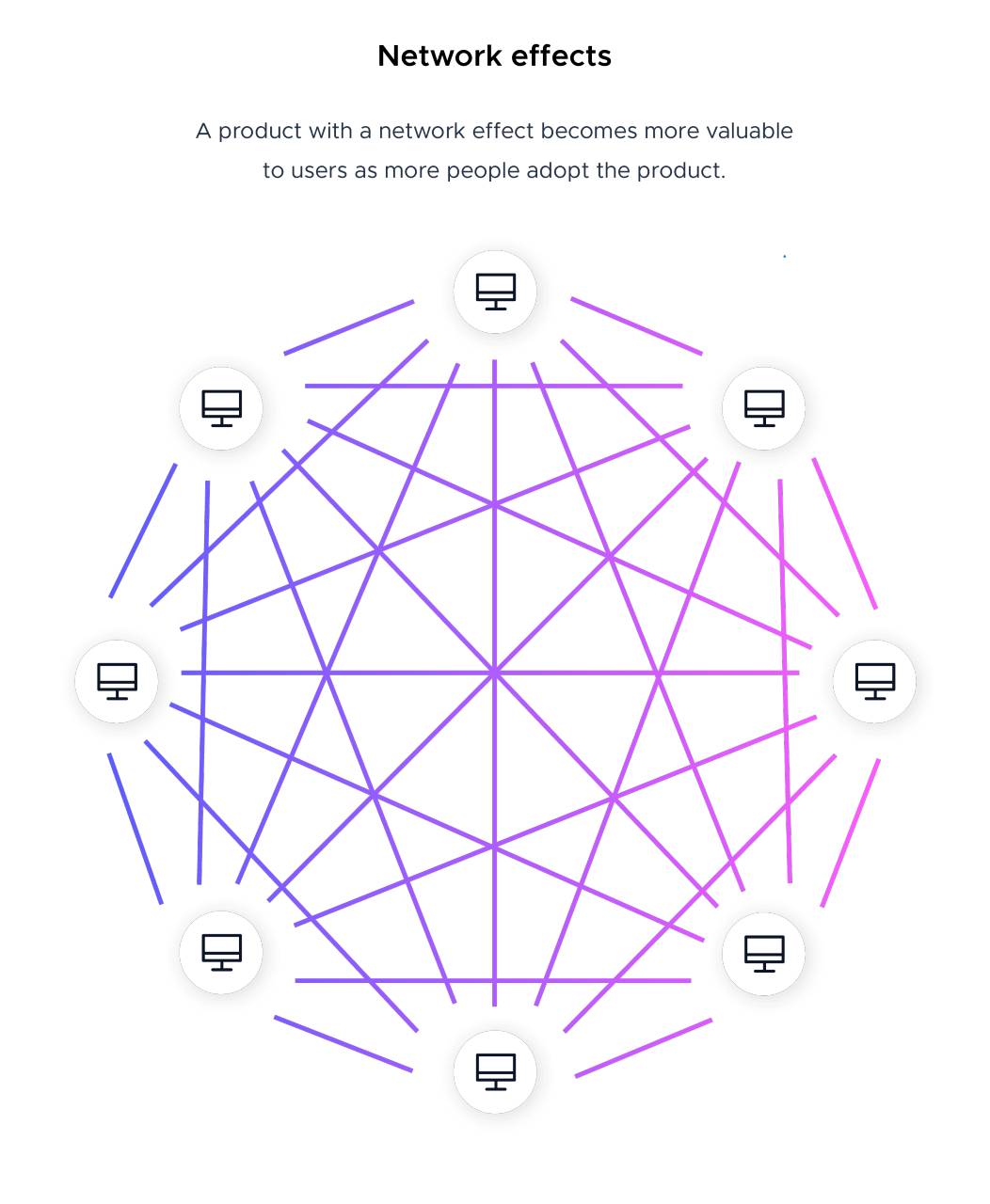
A product with a network effect, on the other hand, becomes more valuable to users as more people adopt the product.
Think of an app like Instagram or a two-sided marketplace like Airbnb: The more people post photos on a regular basis or list their homes for rent, the better the product experience becomes for other users in the long run.
Both virality and network effects are closely associated with the advocacy stage of the Product-Led Growth Flywheel. By inviting other users to evaluate and adopt your product, your customers help increase new acquisition.
The metrics we’ve detailed above are certainly not the only numbers your teams will be tracking. In a product-led organization:
Product-led metrics aren’t meant to replace all your old measurements of success. The right metrics to track depend on your business model and specific goals. What product-led metrics are meant to do is provide common, quantifiable goals that help every department understand and optimize the user journey as a driver of growth.
Remember, the goal isn’t to improve your numbers for the numbers’ sake—it’s to leverage the data you collect to make better decisions and fuel growth by optimizing the user experience.